 |
| A CF-104 Starfighter on display at the Canadian Warplane Heritage Museum in Hamilton, Ontario, shot at 1/1200, f8 at ISO 200 with 3-stop ND filter. |
My first impression of the
Fujifilm X100S
was similar to when I first put my hands on the
Fujifilm X10
, it just felt right. While slightly larger and a tad heavier than the X10, the X100S has a very solid, almost bullet proof feel to it. The old school look and feel that first grabbed my attention when I saw the X10, is present here as well, only more so. In fact twice during the time I spent with this camera I was asked why I was still shooting film.
This blog post is about my impressions after spending 10 days with a X100S I rented from
Borrow Lenses, and while ten days is barely enough time to learn all the ins and outs of any camera, already owning the X10 meant that many of the controls and settings were familiar to me. I did my best to shoot a variety of photographs in different lighting conditions and try as many of the camera's features as possible. The photographs here did pass through Lightroom 4, but very little correction or cropping was done. If a photograph is black and white, it was shot that way.
 |
| Toronto, Ontario, skyline shot at 1/220, f16 at ISO 200. |
Right up front the feature that really set this camera apart for me was the viewfinder. One thing that I always insisted on when purchasing compact or point and shoot style cameras was a viewfinder, or at least what passed as a viewfinder. It was comforting to know that I could hold the camera to my eye when shooting, but truth be told, most of the time I just ended up using the LCD screen to frame the shot. I also believe using the LCD and holding the camera at arms length doesn't give you the same perspective or provide you the same intimacy with the subject.
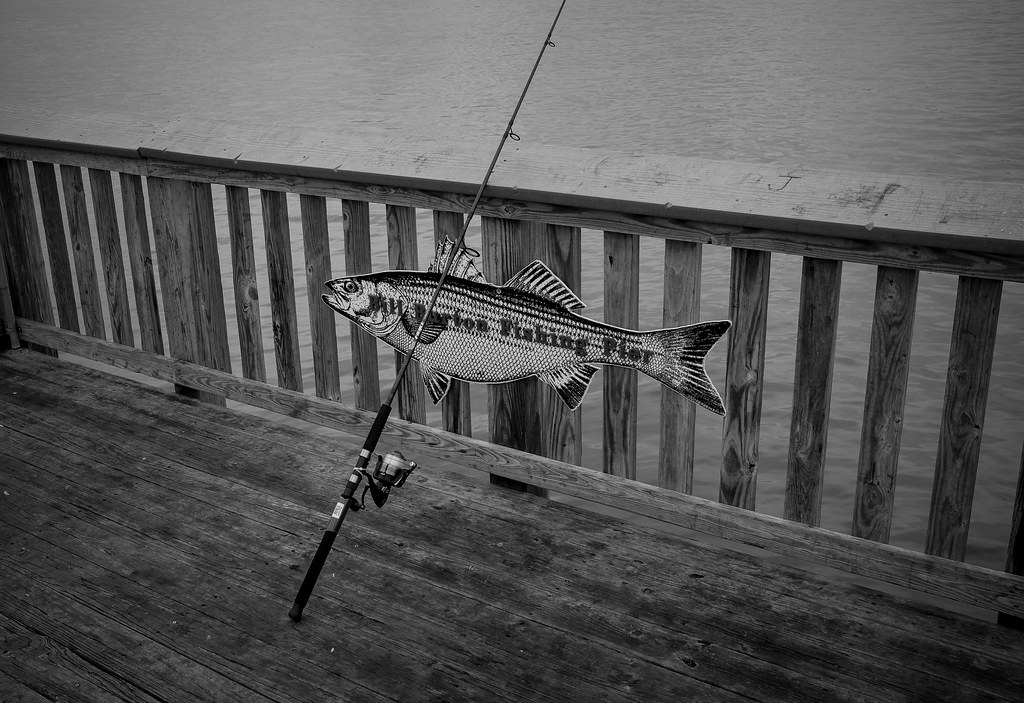 |
| The "Bill Burton Fishing Pier" at Fort Smallwood Park in Maryland shot at 1/600, f8 at ISO 400. |
All this has changed with the hybrid viewfinder on the X100S. In fact, this is one reason I think many photographers are calling this camera a DSLR replacement. You have two choices, an optical viewfinder or an electronic viewfinder. The optical viewfinder displays all the camera information along with a framing guide that is slightly smaller than your field of view allowing to to see what is going on just outside the frame. The electronic viewfinder provides you with a through-the-lens view, that's right, I said a through-the-lens view, including white balance, depth of field and focus. There can be a slight lag in this mode and it will tax your battery, but to see what you are about to capture is an incredible feature.
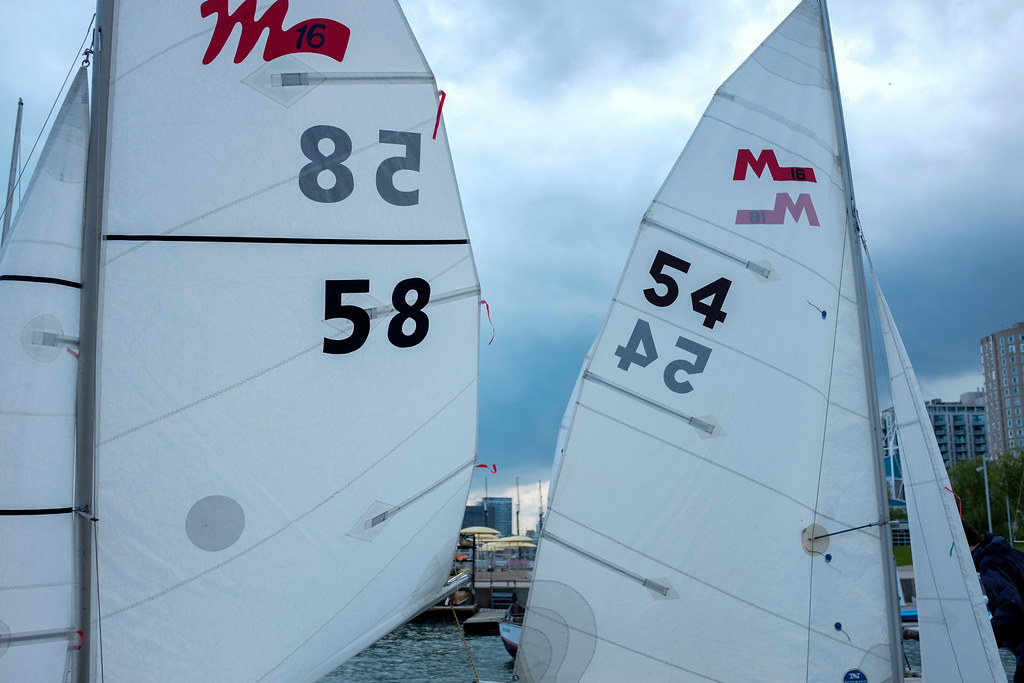 |
| Storm approaching small marina in Toronto shot at 1/1250, f2.8 at ISO 200. |
What is really cool however is after clicking the shutter in either mode you will see the result right in the viewfinder without ever having to remove your eye. No more "chimping" using the LCD screen.
TIP: When using the optical viewfinder set the Corrected AF Frame feature to ON. This setting places a second focus frame in green within the display allowing you to correct for parallax inherent in rangefinders especially when shooting objects near to you.
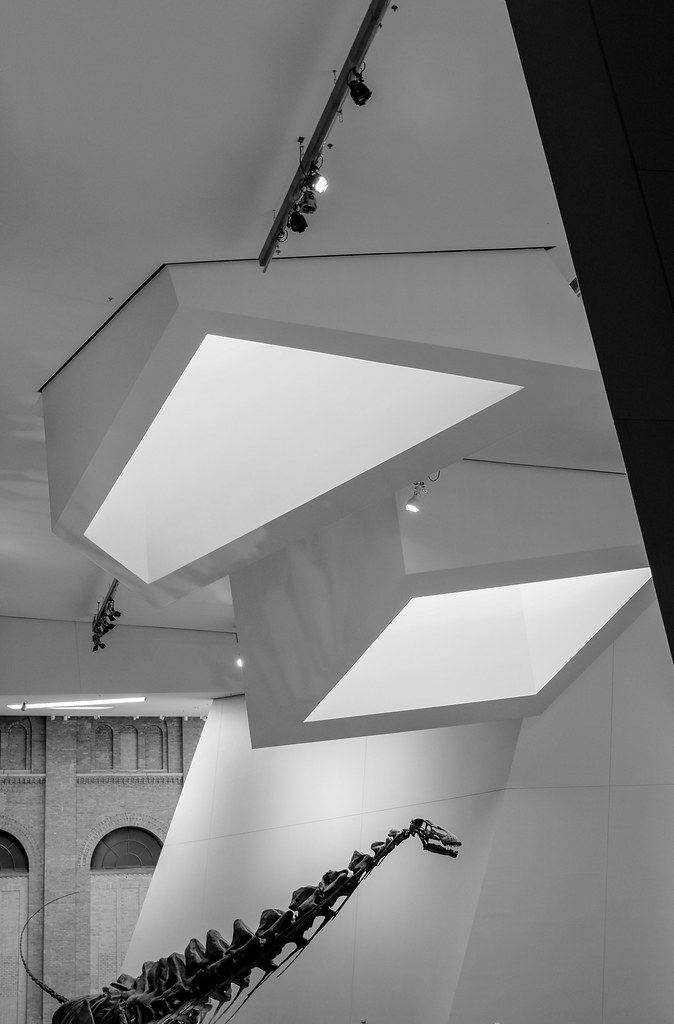 |
| Entrance to the Royal Ontario Museum shot at 1/10, f5.6 at ISO 800. |
All the dials and switches are minimal and have a solid feel. Aperture is controlled using a ring on the lens and shutter speed is controlled using a dial on top of the camera. Not a whole lot to it, you can set f-stop and shutter speed manually or selecting "A" on either dial will place you in aperture or shutter priority mode quickly. Set them both to "A" and you are in program mode. Simple.
 |
| Gerrard Street East in Toronto, Ontario, shot at 1/40, f4 at ISO 1600. |
Three focus options or modes are available using a slider located on the side of the camera. This placement makes it hard to inadvertently change settings, something that has happened to me several times on the X10. AF-S and AF-C are available, nothing new here, but the real upgrade is the manual focus and the fact that it is usable in a way that is very familiar. Imagine using a focus ring on the lens and imagine several ways to assist with focusing while never taking you eye away from the viewfinder. You have it with this camera. I didn't spend a lot of time in manual focus during the 10 days, but I did give a try and found it to be incredible fast and very intuitive. I used the digital split image mode which was familiar, but a new mode called focus peak highlight really allowed me to quickly lock in on focus.
TIP: If Focus Check is set to ON within the setup menu, rotating the focus ring on the lens causes the image in the viewfinder to magnify allowing for precise focus.
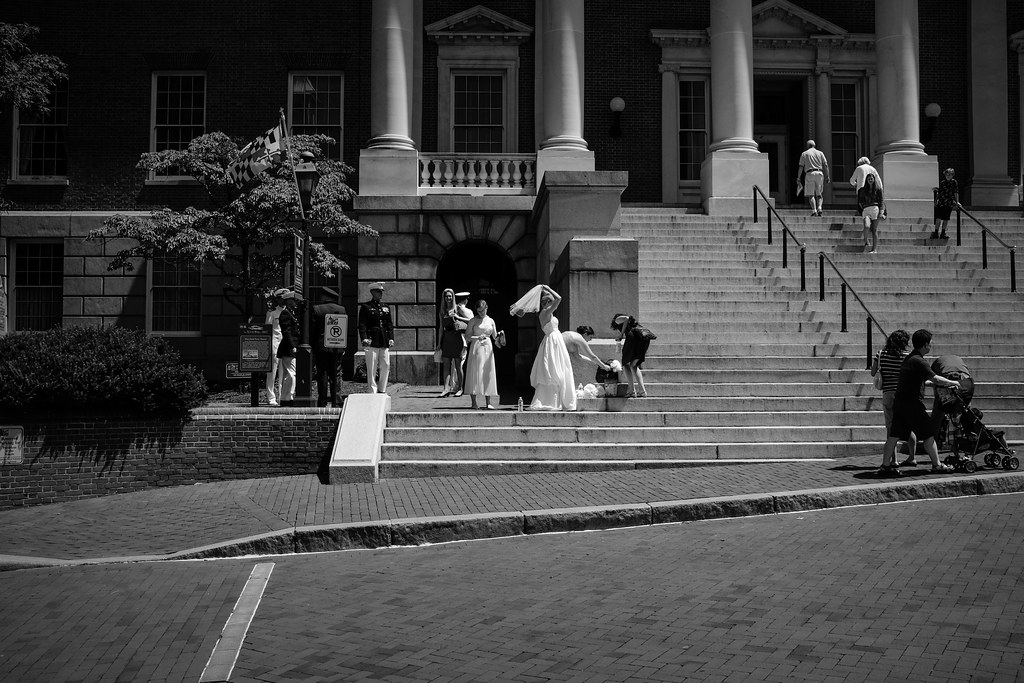 |
| Annapolis wedding party on the Maryland State Capitol steps shot at 1/2500, f5.6 at ISO 400, -1.33 EV. |
This camera wants to shoot black and white photographs and the results are absolutely outstanding. I imagine this is what it is like shooting the
Leica M Monochrome
camera only at $6,500 (minus lens) less. There are actually 10 film simulation modes, both color and monochrome. For color I stuck with the standard setting which mimics Fuji Provia film, but for my black and white setting I chose monochrome plus a yellow filter which I found to give me great results right out of the camera. Very little post production or color correction was needed regardless.
TIP: You have the option to set three custom configurations on this camera, so take one and set it to monochrome, then you can switch from color to B&W in seconds.
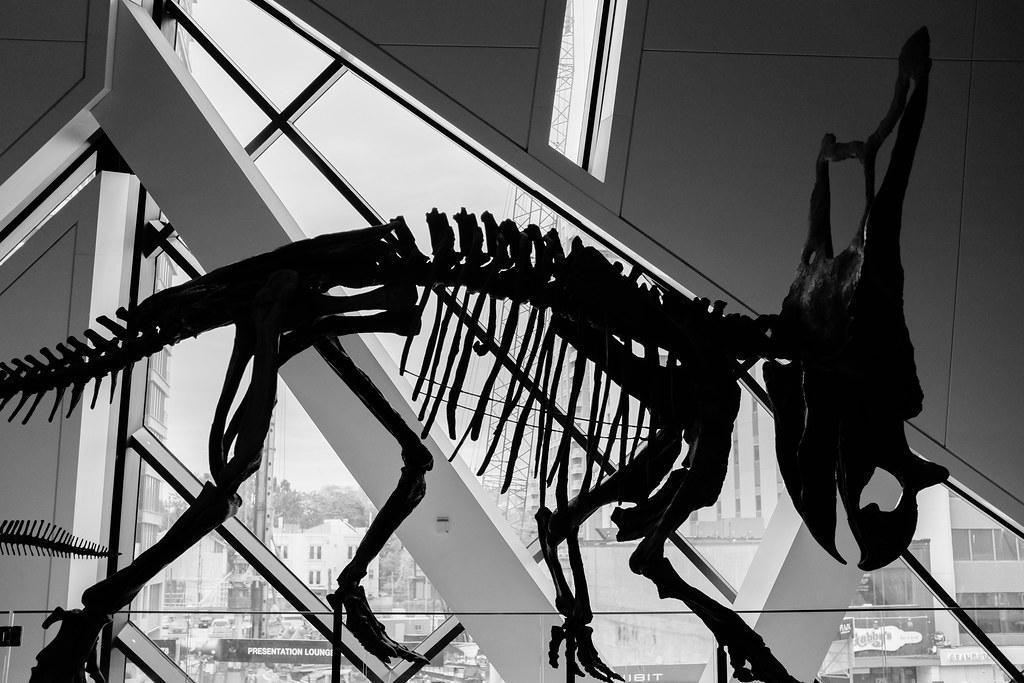 |
| 1/1250, f2.8 at ISO 800, -1.67 EV. |
It's been said in other reviews, but this camera just screams for a lens hood as an included accessory. I found myself frustrated several times unable to take a photograph only to discover the lens cap was still on. I don't know why this seemed to be a problem more so with this camera, but adding a filter and lens hood would eliminate the need for a lens cap all together and still provide protection.
TIP: Forget about purchasing the expensive lens hood from Fuji and go with the
EzFoto 49mm black filter adapter ring and metal lens hood
from Amazon for the best deal.
 |
| View of Toronto, Steam Whistle Brewery's water tower shot at 1/100, f5.6 at ISO 400, -1 EV. |
In my previous post,
Time for an Upgrade? Fuji X10 or X100S, I mentioned that one of my major concerns was the idea of a fixed 35mm lens, however after spending time shooting I more often than not found myself wishing for something wider. Now I'm remembering back to why I was so eager to get my hands on a 24mm lens 25 years ago. Besides, with the quality of the 16 megapixel digital files, severe cropping is possible. I don't remember wishing I had a longer lens during this period and really if all you have is a 35mm lens, then you look at the world from that perspective and make it work.
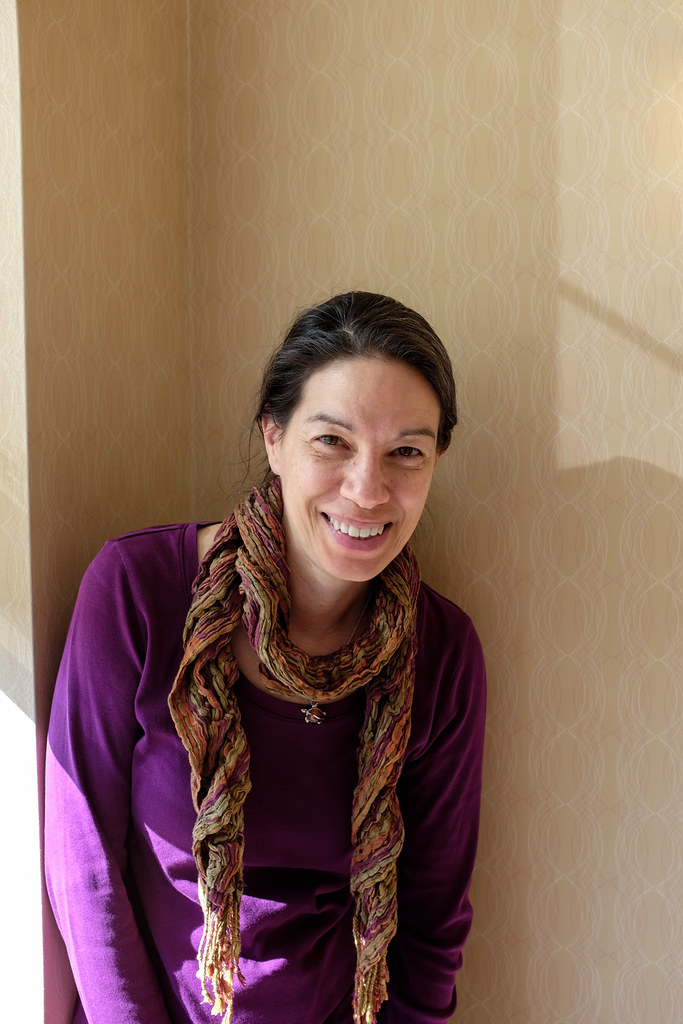 |
| Quick portrait taken in a stairwell of the Marriott shot at 1/70, f5.6 at ISO 200. |
I was able to get a full day of moderate shooting on one battery, but you will definitely need a second battery with this camera if you are doing heavy shooting. After forgetting to charge overnight, my battery died early the next morning and like with my X10, little warning was provided. I was spending lots of time in the menus and reviewing images which I'm sure contributed to battery drain, plus you can pick up a second
NP-95 replacement battery
for $10.00.
TIP: The battery will go in both the right way and wrong way with no noticeable resistance, so check that the camera turns on after inserting so that you are ready to shoot. BONUS TIP: Using the electronic viewfinder will cause the battery to drain faster.
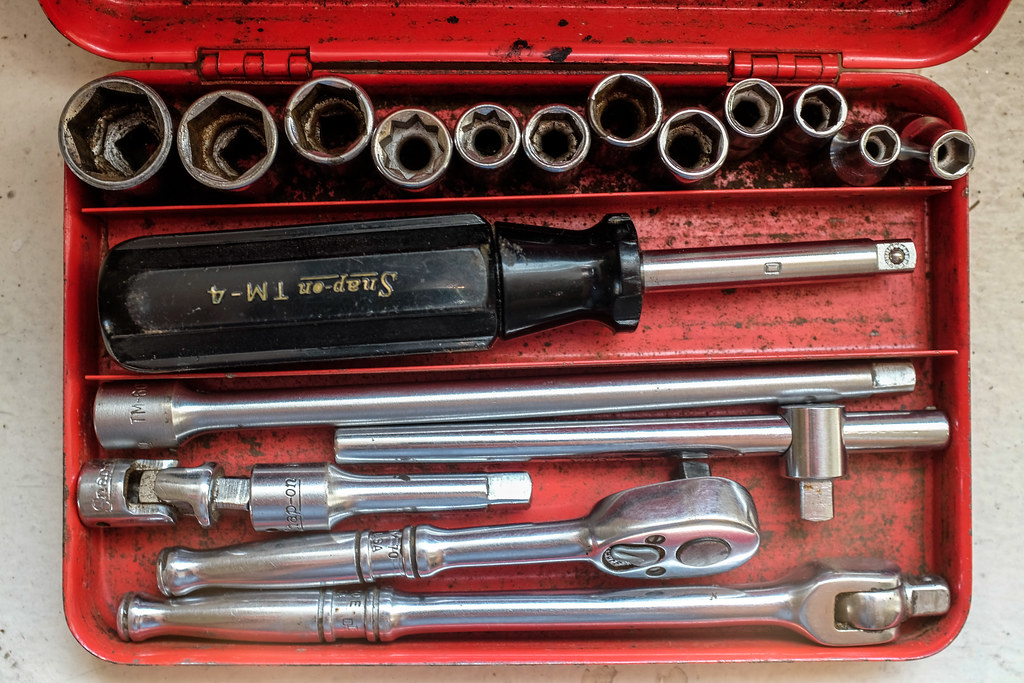 |
| My late Grandfather's Snap-on socket set shot at 1/25, f4.5 at ISO 200, macro setting. |
You could set this camera up once and almost never need to dig into the menus again. But if you do, then Fuji provides an easy way to do that via a Q button which allows quick access to the most used menu features. This is something that has been available on the X10 via a firmware update and it remains a great feature to reach the most used features. Plus you can also see this feature in the viewfinder. I'll say it again, you really don't have to remove you eye from the cameras viewfinder.
 |
| Charles W. Roesch, better known as Charlie the Butcher, at his restaurant in Williamsville, N.Y., shot at 1/50, f2.8 at ISO 800. |
Don't make the mistake and think of this camera as a "point and shoot" or just a camera to throw in your bag in order to get slightly better photos than your phone. This is a serious camera fully capable of taking on most professional jobs. Zack Arias makes this point wonderfully in his
Fuji X100S follow up review: life without DSLRs post.
It may take a little getting used to if you want to use the X100S as a street camera in order to quickly grab shots as you go and a couple of times it did take a few seconds too long to lock focus and exposure before I could shoot. Most of this was probably due to me not being ready along with some operator error. Otherwise I don't really have any complaints. Spending more time shooting with this camera and less time fiddling with all the features, I'm confident that this would be the only camera I would need to carry 75% of the time. It would definitely be my second camera 100% of the time.
TIP: I think the best way to work with this camera would be to choose an ISO, film type and lock in a few of your other favorite settings, then forget about the camera and just shoot. If that sounds like the film days, you would be right.
It was hard to send this camera back. To say that I enjoyed shooting it would be an understatement so If you are still with me and wondering if the X100S will indeed replace my X10... More to come.
Link to the
Fuji X100S manual.
UPDATE: 6/11/2013 - I ordered the
Fujifilm X100S
,
EzFoto metal lens hood
,
B+W 49mm Clear UV Haze filter
and a
NP-95 replacement battery
from Amazon.
UPDATE: 10/13/2013 - I've been shooting with this camera for two months and still loving it. Check out most recent posts to see how I've been using and incorporating the X100S into my photography.












No comments:
Post a Comment